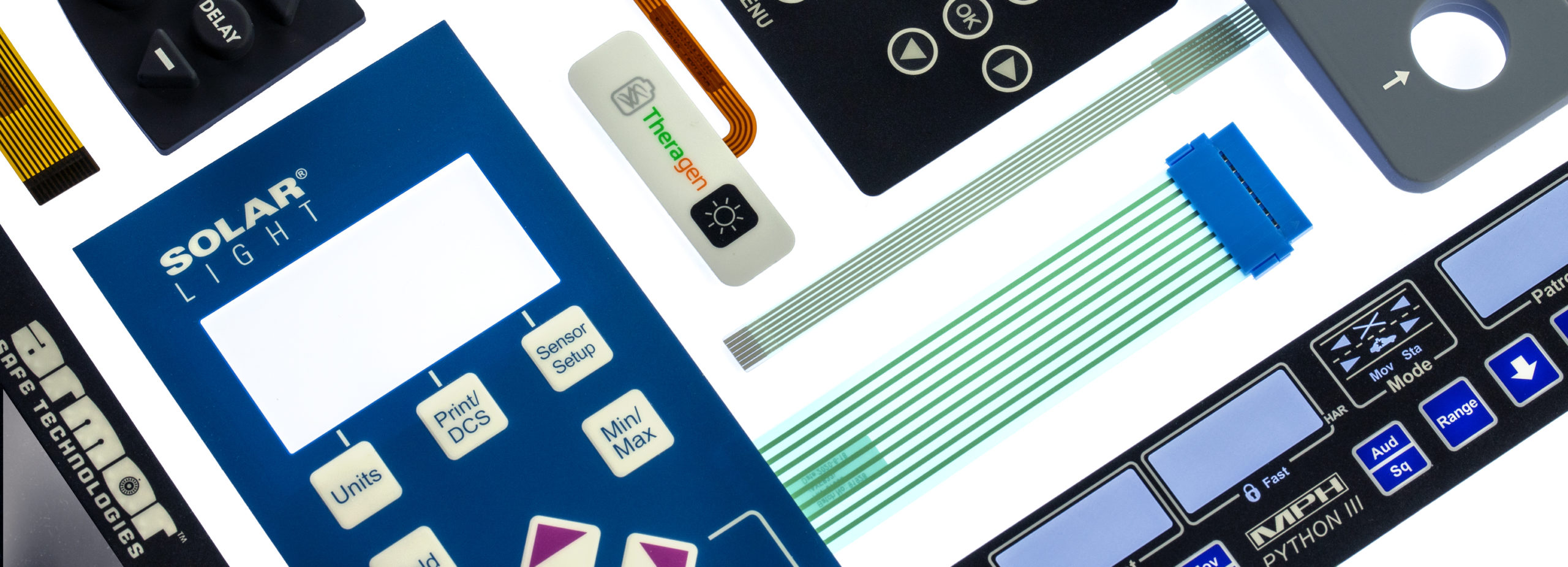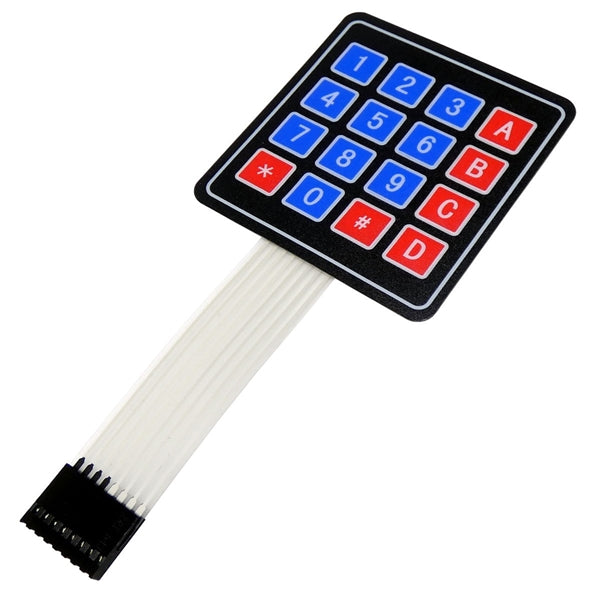You’ll experience the difference when collaborating with a high-quality membrane switch manufacturer.
You’ll experience the difference when collaborating with a high-quality membrane switch manufacturer.
Blog Article
Everything About Membrane Switch: Understanding Its Design and Functionality
When you think of the control interfaces in modern-day devices, membrane switches typically come to mind. These parts are extra than simply buttons; they blend style and performance flawlessly. Recognizing how they function and what makes them effective can alter your viewpoint on everyday electronic devices. However, there are subtleties to their style and performance that you might not understand. Allow's explore what sets membrane layer changes besides other control systems.
What Are Membrane Layer Switches?

Their seamless nature makes them easy to clean and resistant to dust and moisture, a crucial attribute in lots of settings. Membrane layer switches can additionally be tailored pertaining to form, dimension, and graphics, enabling producers to produce special user interfaces customized to details items. And also, they're light-weight and thin, which aids in lessening the general mass of tools. Overall, membrane switches play a substantial role in boosting user experience throughout a broad range of applications.
How Membrane Layer Switches Work
When you push a secret on a membrane layer button, it triggers a simple yet reliable mechanism. membrane switch manufacturer. The leading layer, usually made of versatile product, pushes down onto a conductive layer under it.
You'll observe that the tactile responses varies based on the switch style, providing either a soft click or an extra obvious response. When you launch the key, the membrane returns to its initial placement, resuming the circuit and quiting the signal. This procedure takes place nearly immediately, ensuring a responsive user experience.
Membrane buttons are prominent because of their longevity and resistance to dirt and wetness, making them perfect for numerous applications, from household home appliances to medical tools. Recognizing this operation aids you value their extensive usage.
Key Parts of Membrane Switches
Recognizing the key components of membrane layer buttons is essential for comprehending their capability and layout. The protective layer guards against ecological factors and wear, extending the switch's life-span. By comprehending these elements, you'll get understanding right into exactly how membrane layer switches over operate and their significance in numerous applications.
Materials Made Use Of in Membrane Layer Switch Over Style
The efficiency and sturdiness of membrane layer changes greatly depend upon the materials made use of in their layout. You typically run into polyester and polycarbonate as key substratums due to their outstanding toughness and flexibility. These products resist scratches and chemicals, making them ideal for demanding environments.
The conductive layers typically use silver or carbon, picked for their reliability and conductivity. membrane switch manufacturer. Silver gives remarkable performance, while carbon is a cost-efficient choice. For the overlay, you might take into consideration a matte or shiny finish, relying on your visual demands and individual experience
Adhesives play a vital function as well; they bond layers securely and guarantee longevity. Make particular to choose adhesives that hold up against environmental factors like temperature level and humidity. Lastly, do not ignore the value of an excellent printing technique for graphics, as it boosts both functionality and visual allure. Choosing the right products will certainly guarantee your membrane button stands discover here the test of time.
Design Considerations for Membrane Layer Buttons
While developing membrane switches, it's crucial to take right into account numerous aspects that affect their functionality and individual experience. Beginning by focusing on the format and switch size; make specific they're user-friendly and very easy to browse.
Validate your layout suits environmental factors, like moisture or temperature level variants, which can affect performance. By meticulously taking into consideration these components, you'll create a membrane layer switch that improves use and satisfaction.
Applications of Membrane Layer Switches
Membrane buttons are functional elements discovered in various applications, from industrial equipment to consumer electronics. You'll see their effect in devices that call for resilient interfaces and in tools that gain from sleek styles. Comprehending these applications helps you appreciate the capability and functionality of membrane layer switches in daily innovation.
Industrial Devices Usage
When you're looking to boost the performance of commercial tools, membrane switches offer a reliable option visit this website that integrates resilience with straightforward layout. These switches are ideal for severe environments, supplying resistance to dust, moisture, and chemicals. Welcome membrane switches to enhance your operations and boost total efficiency.
Customer Electronics Assimilation
In the domain of consumer electronic devices, membrane layer switches play an essential duty in enhancing customer communication and tool performance. Membrane layer switches also ensure sturdiness and resistance to dirt and moisture, extending the life expectancy of your electronic devices. By selecting membrane buttons, you improve not just the functionality but likewise the style of your tools, making daily interactions smooth and delightful.
Advantages and Disadvantages of Membrane Layer Buttons
While membrane buttons provide an array of advantages, they also come with some downsides that you need to think about. One significant benefit is their small design, making them optimal for space-constrained applications.

Membrane layer switches can have a shorter life-span contrasted to mechanical switches, especially under hefty use. They can also be much less responsive, which may influence user feedback during procedure. Stabilizing these pros and cons will help you establish if membrane layer buttons are the best fit for your project.
Often Asked Concerns
The Length Of Time Do Membrane Layer Switches Normally Last?
Membrane switches normally last in between 5 to ten years, depending on use and environmental conditions. You'll wish to examine factors like wear, direct exposure to moisture, and temperature fluctuations to determine their long life effectively.
Can Membrane Layer Changes Be Customized for Certain Designs?
Yes, you can tailor membrane layer switches to fit particular styles (membrane switch manufacturer). You'll have the flexibility to pick shades, forms, and formats that match your job's requirements, guaranteeing they mix perfectly with your general aesthetic
What Is the Expense Variety for Membrane Layer Switch Production?
The cost array for membrane switch production generally falls between $1 and $10 per visit homepage device, depending upon factors like style complexity, quantity, and materials. You can get quotes from makers to locate the most effective choice.

Are Membrane Changes Waterproof or Immune?
Membrane switches can be designed to be water resistant or immune, relying on products used and construction methods. If you require them for wet environments, assure you specify those requirements during the design procedure.
Just How Do Membrane Layer Changes Contrast to Traditional Switches?
Membrane layer switches are typically thinner and much more versatile than conventional buttons, using a smooth layout. They're usually simpler to clean up and incorporate, yet may not provide the responsive feedback you're made use of to with mechanical choices.
Conclusion

Report this page